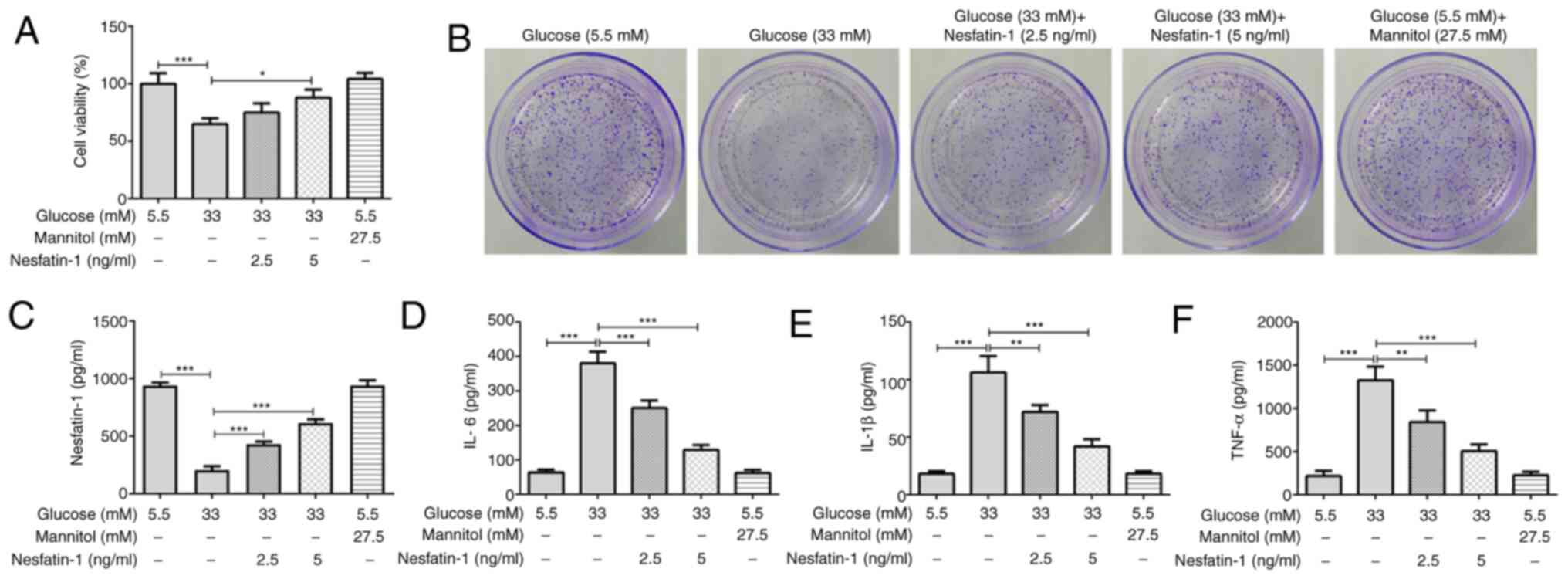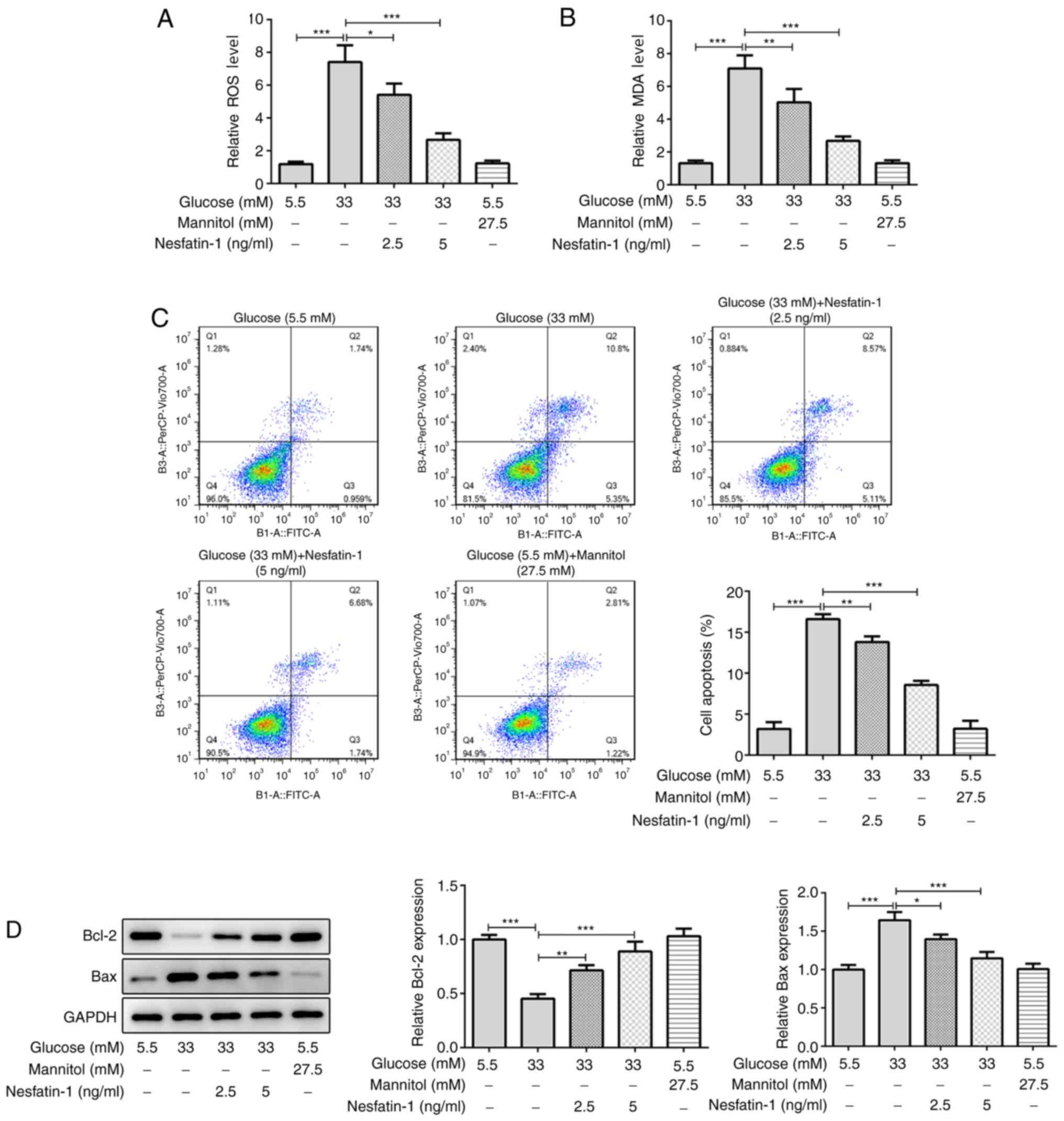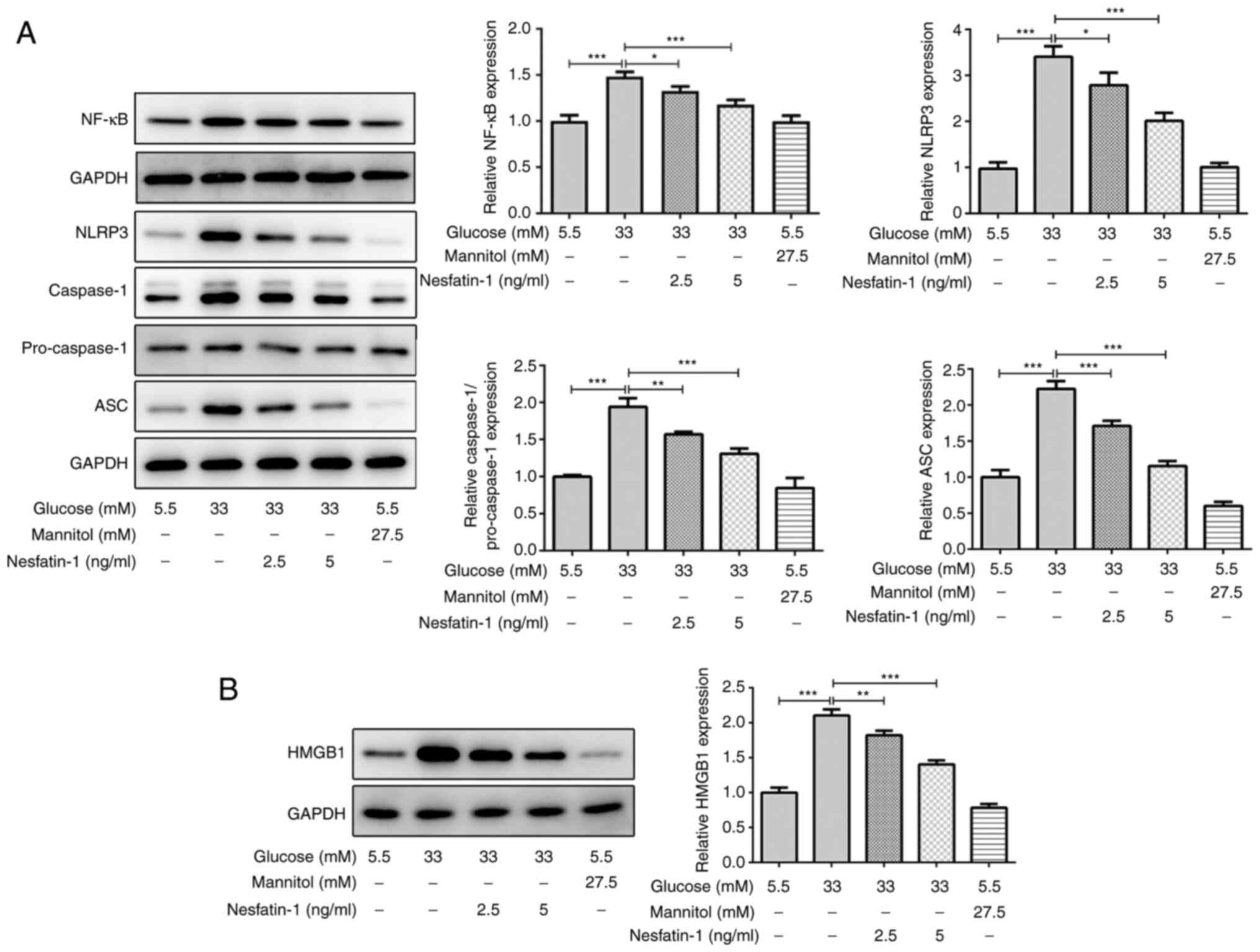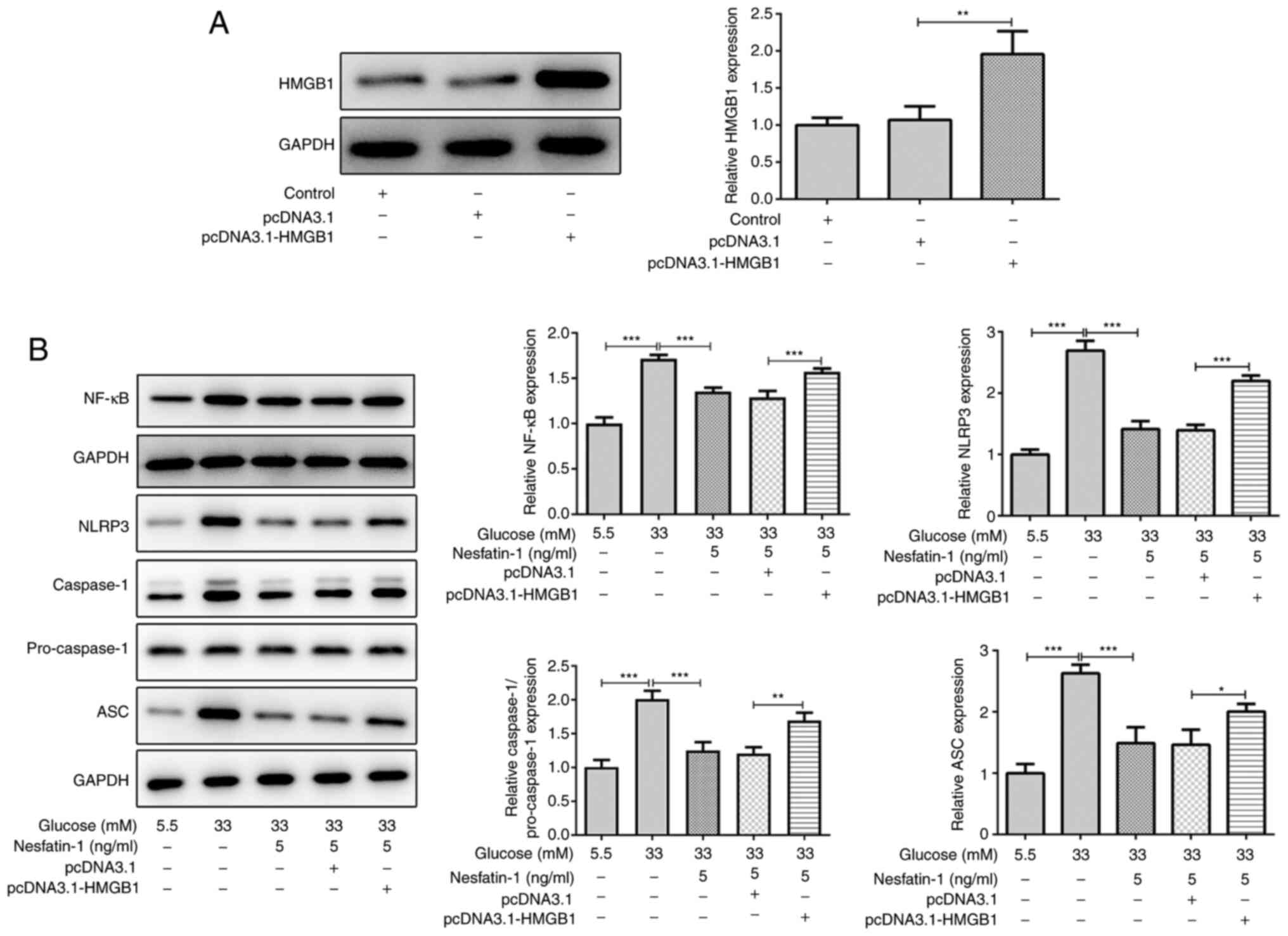|
1
|
Toniolo A, Cassani G, Puggioni A, Rossi A,
Colombo A, Onodera T and Ferrannini E: The diabetes pandemic and
associated infections: Suggestions for clinical microbiology. Rev
Med Microbiol. 30:1–17. 2019.PubMed/NCBI View Article : Google Scholar
|
|
2
|
Vieira-Potter VJ, Karamichos D and Lee DJ:
Ocular complications of diabetes and therapeutic approaches. Biomed
Res Int. 2016(3801570)2016.PubMed/NCBI View Article : Google Scholar
|
|
3
|
Yau JW, Rogers SL, Kawasaki R, Lamoureux
EL, Kowalski JW, Bek T, Chen SJ, Dekker JM, Fletcher A, Grauslund
J, et al: Global prevalence and major risk factors of diabetic
retinopathy. Diabetes Care. 35:556–564. 2012.PubMed/NCBI View Article : Google Scholar
|
|
4
|
Duh EJ, Sun JK and Stitt AW: Diabetic
retinopathy: Current understanding, mechanisms, and treatment
strategies. JCI insight. 2(e93751)2017.PubMed/NCBI View Article : Google Scholar
|
|
5
|
Ahmadieh H, Behbahani S and Safi S:
Continuous wavelet transform analysis of ERG in patients with
diabetic retinopathy. Doc Ophthalmol. 142:305–314. 2021.PubMed/NCBI View Article : Google Scholar
|
|
6
|
Saaddine JB, Honeycutt AA, Narayan KM,
Zhang X, Klein R and Boyle JP: Projection of diabetic retinopathy
and other major eye diseases among people with diabetes mellitus:
United States, 2005-2050. Arch Ophthalmol. 126:1740–1747.
2008.PubMed/NCBI View Article : Google Scholar
|
|
7
|
Rübsam A, Parikh S and Fort PE: Role of
inflammation in diabetic retinopathy. Int J Mol Sci.
19(942)2018.PubMed/NCBI View Article : Google Scholar
|
|
8
|
Noda K, Nakao S, Ishida S and Ishibashi T:
Leukocyte adhesion molecules in diabetic retinopathy. J Ophthalmol.
2012(279037)2012.PubMed/NCBI View Article : Google Scholar
|
|
9
|
Kern TS: Contributions of inflammatory
processes to the development of the early stages of diabetic
retinopathy. Exp Diabetes Res. 2007(95103)2007.PubMed/NCBI View Article : Google Scholar
|
|
10
|
Adamis AP: Is diabetic retinopathy an
inflammatory disease? Br J Ophthalmol. 86:363–365. 2002.PubMed/NCBI View Article : Google Scholar
|
|
11
|
Maier R, Weger M, Haller-Schober EM,
El-Shabrawi Y, Wedrich A, Theisl A, Aigner R, Barth A and Haas A:
Multiplex bead analysis of vitreous and serum concentrations of
inflammatory and proangiogenic factors in diabetic patients. Mol
Vis. 14:637–643. 2008.PubMed/NCBI
|
|
12
|
Dai Y, Wu Z, Wang F, Zhang Z and Yu M:
Identification of chemokines and growth factors in proliferative
diabetic retinopathy vitreous. BioMed Res Int.
2014(486386)2014.PubMed/NCBI View Article : Google Scholar
|
|
13
|
Yoshimura T, Sonoda KH, Sugahara M,
Mochizuki Y, Enaida H, Oshima Y, Ueno A, Hata Y, Yoshida H and
Ishibashi T: Comprehensive analysis of inflammatory immune
mediators in vitreoretinal diseases. PLoS One.
4(e8158)2009.PubMed/NCBI View Article : Google Scholar
|
|
14
|
Dai R, Deng G, Sun Z, Liu Z, Qian Y and
Han Y: Relation of serum and vitreous nesfatin-1 concentrations
with diabetic retinopathy. J Clin Lab Anal.
31(e22105)2017.PubMed/NCBI View Article : Google Scholar
|
|
15
|
Shimizu H, Oh IS, Hashimoto K, Nakata M,
Yamamoto S, Yoshida N, Eguchi H, Kato I, Inoue K, Satoh T, et al:
Peripheral administration of nesfatin-1 reduces food intake in
mice: The leptin-independent mechanism. Endocrinology. 150:662–671.
2009.PubMed/NCBI View Article : Google Scholar
|
|
16
|
Nazarnezhad S, Rahmati M, Shayannia A,
Abbasi Z, Salehi M and Khaksari M: Nesfatin-1 protects PC12 cells
against high glucose-induced cytotoxicity via inhibiting oxidative
stress, autophagy and apoptosis. Neurotoxicology. 74:196–202.
2019.PubMed/NCBI View Article : Google Scholar
|
|
17
|
Tang CH, Fu XJ, Xu XL, Wei XJ and Pan HS:
The anti-inflammatory and anti-apoptotic effects of nesfatin-1 in
the traumatic rat brain. Peptides. 36:39–45. 2012.PubMed/NCBI View Article : Google Scholar
|
|
18
|
Chen H, Zhang X, Liao N, Mi L, Peng Y, Liu
B, Zhang S and Wen F: Enhanced expression of NLRP3
inflammasome-related inflammation in diabetic retinopathy. Invest
Ophthalmol Vis Sci. 59:978–985. 2018.PubMed/NCBI View Article : Google Scholar
|
|
19
|
Yin Y, Chen F, Wang W, Wang H and Zhang X:
Resolvin D1 inhibits inflammatory response in STZ-induced diabetic
retinopathy rats: Possible involvement of NLRP3 inflammasome and
NF-κB signaling pathway. Mol Vis. 23:242–250. 2017.PubMed/NCBI
|
|
20
|
Yang Q, Li S, Zhou Z, Fu M, Yang X, Hao K
and Liu Y: HDAC6 inhibitor Cay10603 inhibits high glucose-induced
oxidative stress, inflammation and apoptosis in retinal pigment
epithelial cells via regulating NF-κB and NLRP3 inflammasome
pathway. Gen Physiol Biophys. 39:169–177. 2020.PubMed/NCBI View Article : Google Scholar
|
|
21
|
Zhang Y, Lv X, Hu Z, Ye X, Zheng X, Ding
Y, Xie P and Liu Q: Protection of Mcc950 against
high-glucose-induced human retinal endothelial cell dysfunction.
Cell Death Dis. 8(e2941)2017.PubMed/NCBI View Article : Google Scholar
|
|
22
|
Chen XL, Zhang XD, Li YY, Chen XM, Tang DR
and Ran RJ: Involvement of HMGB1 mediated signalling pathway in
diabetic retinopathy: Evidence from type 2 diabetic rats and
ARPE-19 cells under diabetic condition. Br J Ophthalmol.
97:1598–1603. 2013.PubMed/NCBI View Article : Google Scholar
|
|
23
|
Yu Y, Yang L, Lv J, Huang X, Yi J, Pei C
and Shao Y: The role of high mobility group box 1 (HMGB-1) in the
diabetic retinopathy inflammation and apoptosis. Int J Clin Exp
Pathol. 8:6807–6813. 2015.PubMed/NCBI
|
|
24
|
Chi W, Chen H, Li F, Zhu Y, Yin W and Zhuo
Y: HMGB1 promotes the activation of NLRP3 and caspase-8
inflammasomes via NF-κB pathway in acute glaucoma. J
Neuroinflammation. 12(137)2015.PubMed/NCBI View Article : Google Scholar
|
|
25
|
Kim EJ, Park SY, Baek SE, Jang MA, Lee WS,
Bae SS, Kim K and Kim CD: HMGB1 Increases IL-1β production in
vascular smooth muscle cells via NLRP3 Inflammasome. Front Physiol.
9(313)2018.PubMed/NCBI View Article : Google Scholar
|
|
26
|
Wang ZZ, Chen SC, Zou XB, Tian LL, Sui SH
and Liu NZ: Nesfatin-1 alleviates acute lung injury through
reducing inflammation and oxidative stress via the regulation of
HMGB1. Eur Rev Med Pharmacol Sci. 24:5071–5081. 2020.PubMed/NCBI View Article : Google Scholar
|
|
27
|
Chen X, Shen WB and Yang P, Dong D, Sun W
and Yang P: High glucose inhibits neural stem cell differentiation
through oxidative stress and endoplasmic reticulum stress. Stem
Cells Dev. 27:745–755. 2018.PubMed/NCBI View Article : Google Scholar
|
|
28
|
Farnoodian M, Halbach C, Slinger C,
Pattnaik BR, Sorenson CM and Sheibani N: High glucose promotes the
migration of retinal pigment epithelial cells through increased
oxidative stress and PEDF expression. Am J Physiol Cell Physiol.
311:C418–C436. 2016.PubMed/NCBI View Article : Google Scholar
|
|
29
|
Hu YJ, Lin HJ, Dib B, Atik A, Bouzika P,
Lin C, Yan Y, Tang S, Miller JW and Vavvas DG: Cholesterol crystals
induce inflammatory cytokines expression in a human retinal pigment
epithelium cell line by activating the NF-κB pathway. Discov Med.
18:7–14. 2014.PubMed/NCBI
|
|
30
|
Tekin T, Cicek B and Konyaligil N:
Regulatory peptide nesfatin-1 and its relationship with metabolic
syndrome. Eurasian J Med. 51:280–284. 2019.PubMed/NCBI View Article : Google Scholar
|
|
31
|
Ayada C, Toru Ü and Korkut Y: Nesfatin-1
and its effects on different systems. Hippokratia. 19:4–10.
2015.PubMed/NCBI
|
|
32
|
Shivarudrappa AH and Ponesakki G: Lutein
reverses hyperglycemia-mediated blockage of Nrf2 translocation by
modulating the activation of intracellular protein kinases in
retinal pigment epithelial (ARPE-19) cells. J Cell Commun Signal.
14:207–221. 2020.PubMed/NCBI View Article : Google Scholar
|
|
33
|
Singh LP: Thioredoxin interacting protein
(TXNIP) and pathogenesis of diabetic retinopathy. J Clin Exp
Ophthalmol. 4(287)2013.PubMed/NCBI View Article : Google Scholar
|
|
34
|
Ratsimandresy RA, Dorfleutner A and
Stehlik C: An update on PYRIN domain-containing pattern recognition
receptors: From immunity to pathology. Front Immunol.
4(440)2013.PubMed/NCBI View Article : Google Scholar
|
|
35
|
Li W, Liu X, Tu Y, Ding D, Yi Q, Sun X,
Wang Y, Wang K, Zhu M and Mao J: Dysfunctional Nurr1 promotes high
glucose-induced Müller cell activation by up-regulating the
NF-κB/NLRP3 inflammasome axis. Neuropeptides.
82(102057)2020.PubMed/NCBI View Article : Google Scholar
|
|
36
|
Lu L, Lu Q, Chen W, Li J, Li C and Zheng
Z: Vitamin D3 protects against diabetic retinopathy by
inhibiting high-glucose-induced activation of the ROS/TXNIP/NLRP3
inflammasome pathway. J Diabetes Res. 2018(8193523)2018.PubMed/NCBI View Article : Google Scholar
|
|
37
|
Li S, Yang H and Chen X: Protective
effects of sulforaphane on diabetic retinopathy: Activation of the
Nrf2 pathway and inhibition of NLRP3 inflammasome formation. Exp
Animals. 68:221–231. 2019.PubMed/NCBI View Article : Google Scholar
|
|
38
|
Loukovaara S, Piippo N, Kinnunen K, Hytti
M, Kaarniranta K and Kauppinen A: NLRP3 inflammasome activation is
associated with proliferative diabetic retinopathy. Acta
Ophthalmol. 95:803–808. 2017.PubMed/NCBI View Article : Google Scholar
|
|
39
|
Steinle JJ: Role of HMGB1 signaling in the
inflammatory process in diabetic retinopathy. Cell Signal.
73(4)2020.PubMed/NCBI View Article : Google Scholar
|
|
40
|
Liang WJ, Yang HW, Liu HN, Qian W and Chen
XL: HMGB1 upregulates NF-kB by inhibiting IKB-α and associates with
diabetic retinopathy. Life Sci. 241(117146)2020.PubMed/NCBI View Article : Google Scholar
|
|
41
|
Duan J, Zhang Q, Hu X, Lu D, Yu W and Bai
H: N4-acetylcytidine is required for sustained NLRP3
inflammasome activation via HMGB1 pathway in microglia. Cell
Signal. 58:44–52. 2019.PubMed/NCBI View Article : Google Scholar
|
|
42
|
Song E, Jahng JW, Chong LP, Sung HK, Han
M, Luo C, Wu D, Boo S, Hinz B, Cooper MA, et al: Lipocalin-2
induces NLRP3 inflammasome activation via HMGB1 induced TLR4
signaling in heart tissue of mice under pressure overload
challenge. Am J Transl Res. 9:2723–2735. 2017.PubMed/NCBI
|


















